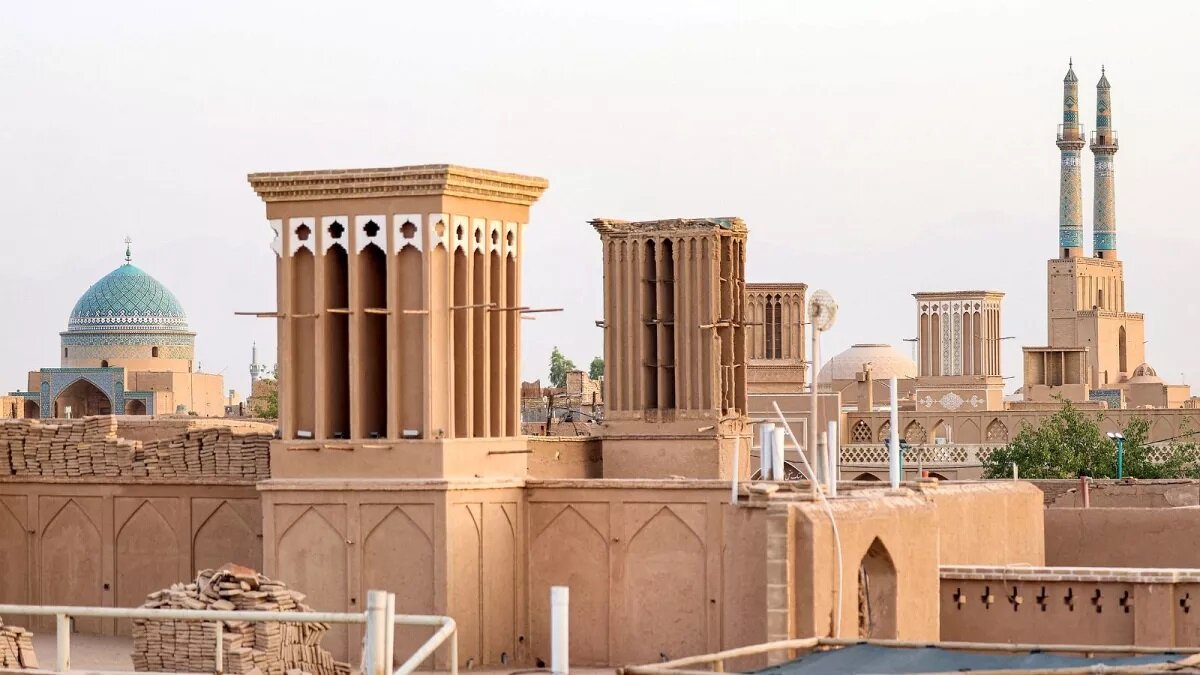UNESCO-listed Yazd to host intl. conference on wind towers

TEHRAN - The UNESCO-registered city of Yazd, renowned for its historical wind towers (also known as wind catchers) as part of its atmospheric urban landscape, is set to host an international conference on wind towers in March 2025.
Announced by Seyyed Mohammad Rasteagari, the tourism chief of Yazd province, the event is organized in collaboration with Yazd University, to highlight the architectural and cultural significance of wind towers, which are ingenious structures designed to cool buildings in hot desert climates.
These traditional features are a hallmark of Iranian architecture, with Yazd being home to some of the most exquisite and well-preserved examples.
Preserving and promoting a national heritage
Rasteagari emphasized the importance of safeguarding Iran’s wind towers against misappropriation by other countries.
“Efforts are underway to achieve global recognition for all wind towers across Iran,” he stated, adding that the conference would serve as a platform for promoting and protecting this vital heritage.
Restoration, lighting, and preservation of identified wind towers in Yazd were among schemes discussed by several provincial experts and officials during a preparatory meeting held on Sunday, CHTN reported.
Rastegari noted that these efforts are being carried out through a partnership involving property owners, Yazd University, and other relevant agencies.
Collaboration across provinces
To ensure broader participation, representatives from other Iranian provinces with historical wind towers will be invited to the conference.
This collaboration seeks to promote shared efforts in preserving and showcasing wind towers nationwide, the official said.
The initiative also aligns with ongoing projects at Yazd’s World Heritage Site, which is dedicated to preserving the city’s historical urban fabric, including its iconic wind towers. Rasteagari confirmed that Yazd University would play a pivotal role in these efforts.
A don’t miss destination
In July 2017, the historical core of Yazd, the provincial capital, was named a UNESCO World Heritage site. Yazd is regularly referred to as a delightful place to stay, or a “don’t miss” destination by almost all of its visitors. The city is full of mudbrick houses that are equipped with innovative badgirs (wind catchers), atmospheric alleyways, and many Islamic and Iranian monuments that shape its eye-catching city landscape.
Cultural heritage experts believe that Yazd is a living testimony to the intelligent use of limited available resources in the desert for survival. Water is brought to the city by the qanat system. Each district of the city is built on a qanat and has a communal center. Furthermore, the use of earth in buildings includes walls and roofs through the construction of vaults and domes. Houses are built with courtyards below ground level, serving underground areas. Wind-catchers, courtyards, and thick earthen walls create a pleasant microclimate.
The historical core of Yazd is chockfull of mudbrick houses, bazaars, public bathhouses, water cisterns, mosques, synagogues, Zoroastrian temples, and centuries-old gardens. From the divine point of view, the city enjoys the peaceful coexistence of three religions: Islam, Judaism, and Zoroastrianism.
Yazd is home to numerous qanats which have supplied water to agricultural and permanent settlements for thousands of years. The man-carved underground qanat system relies on snow-fed streams flowing down the foothills of surrounding mountains. The earliest water supply to Yazd is estimated to date from the Sassanid era (224 to 651 CE). However, many others have been continually repaired and used over time, and most surviving Ab-Anbars (traditional mudbrick cisterns) can today be traced to the late Safavid and Qajar periods.
AM
Leave a Comment